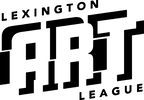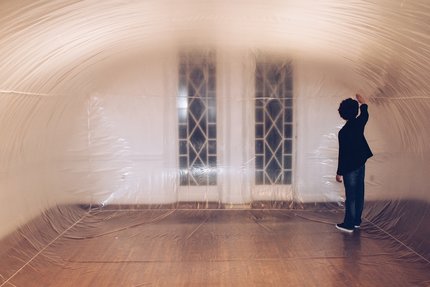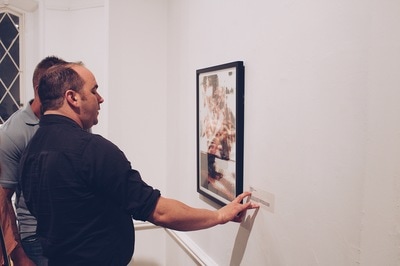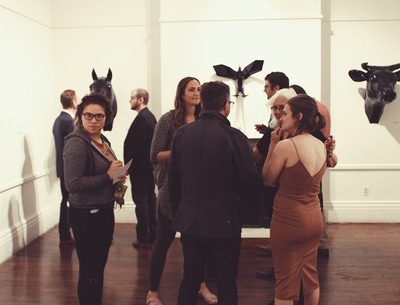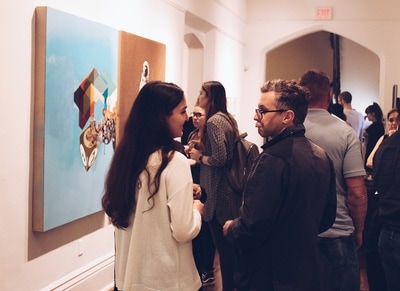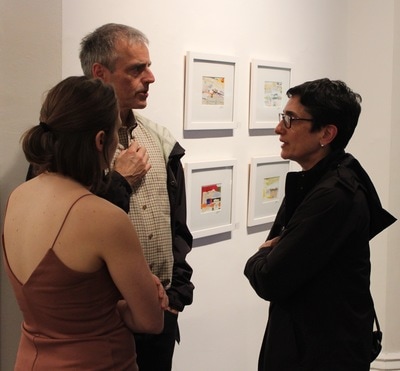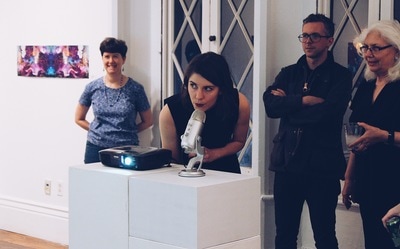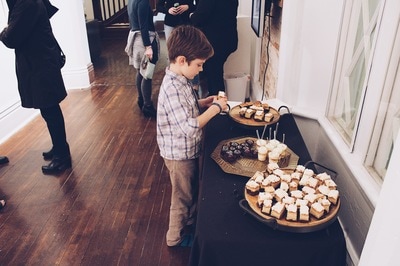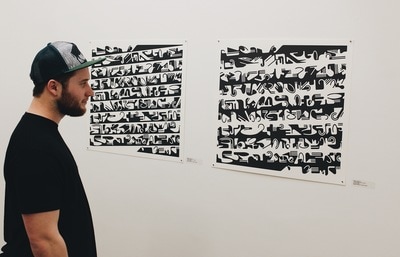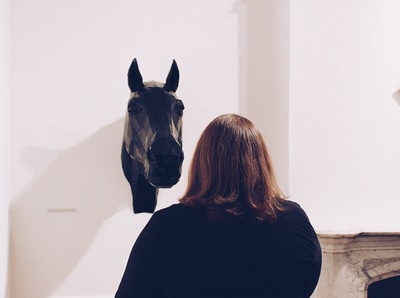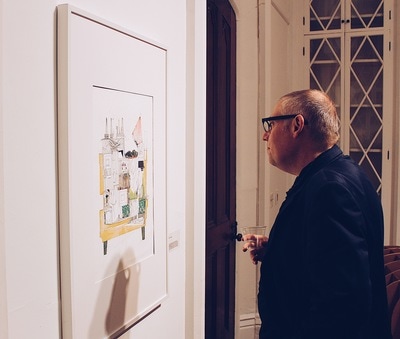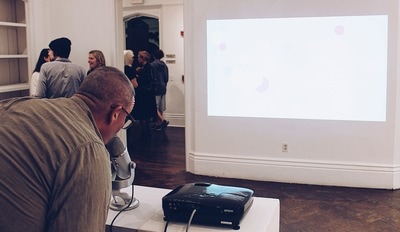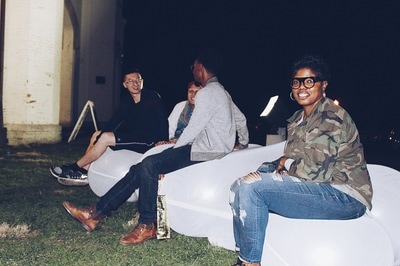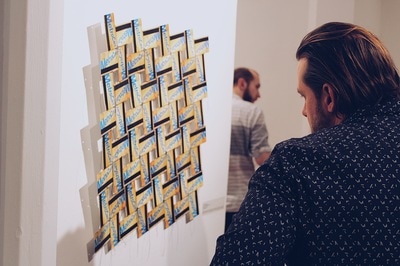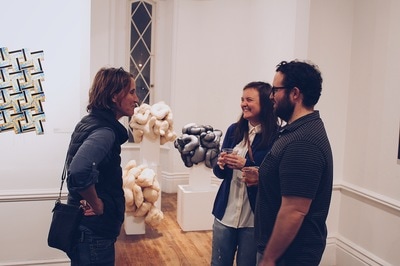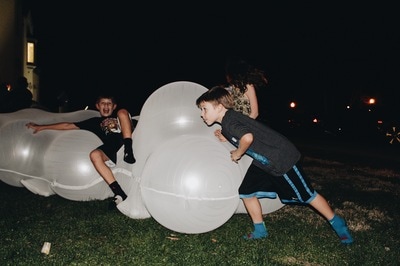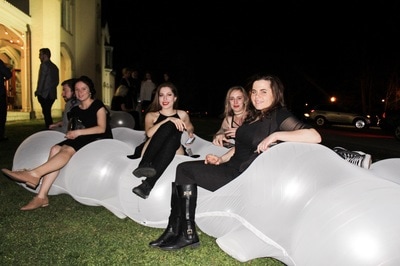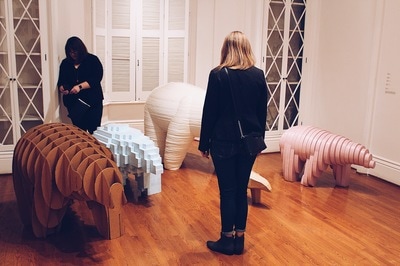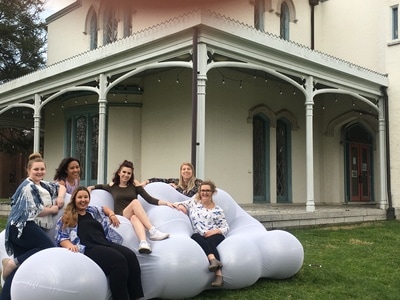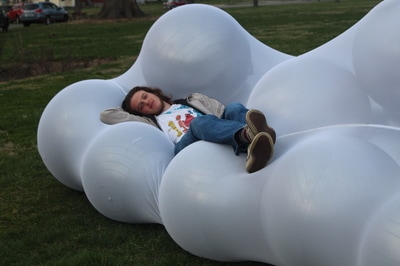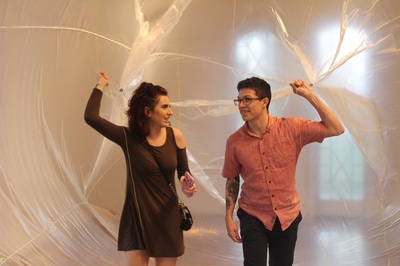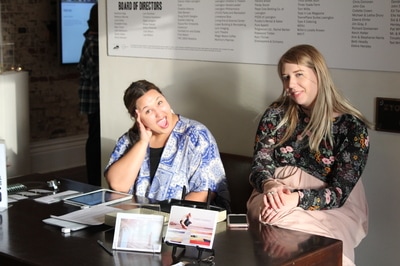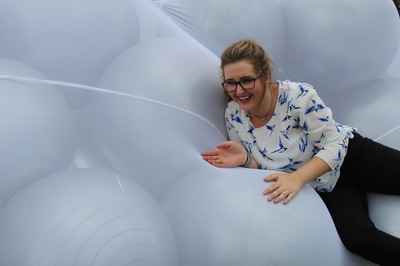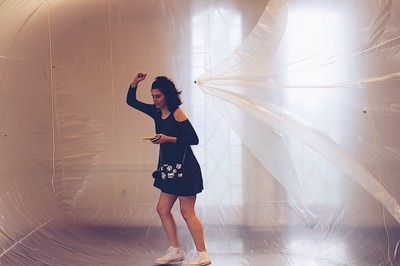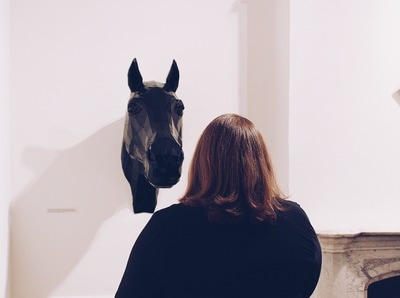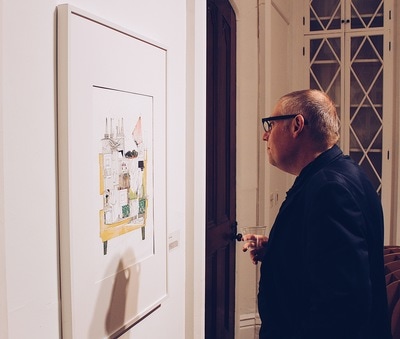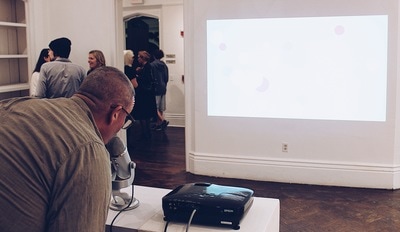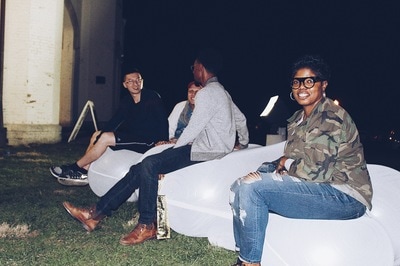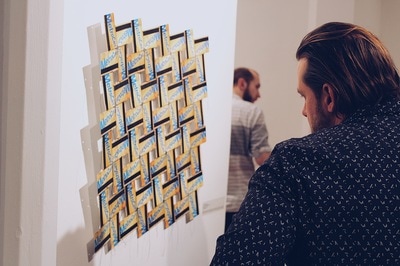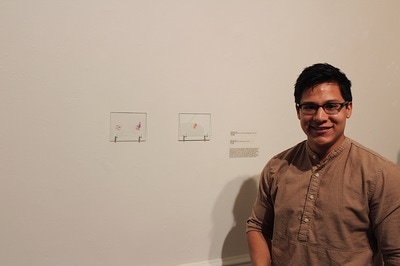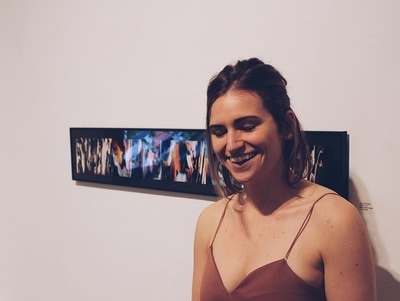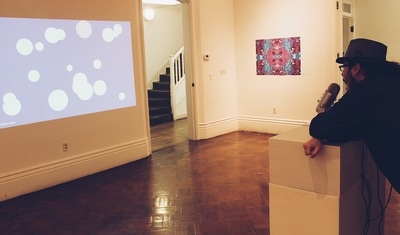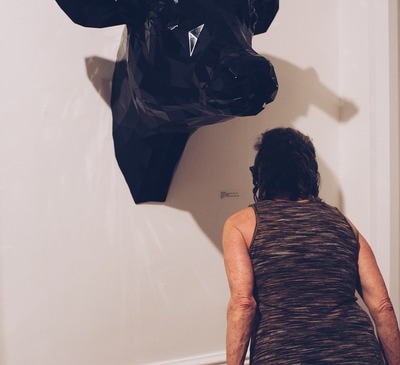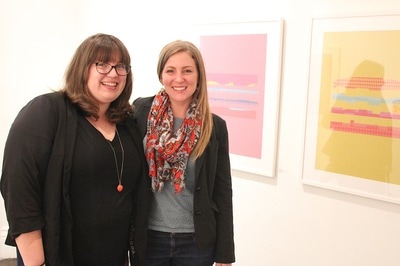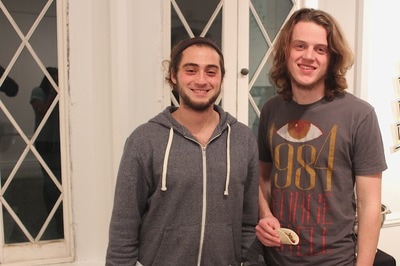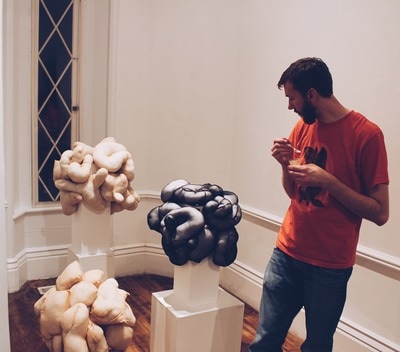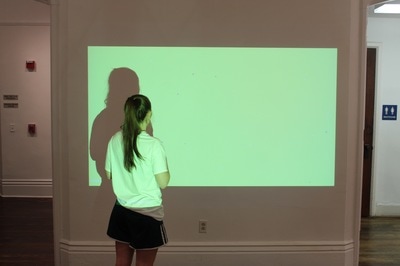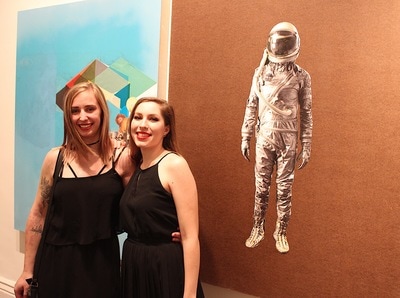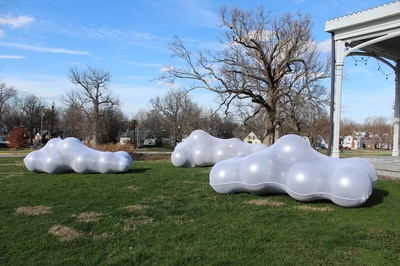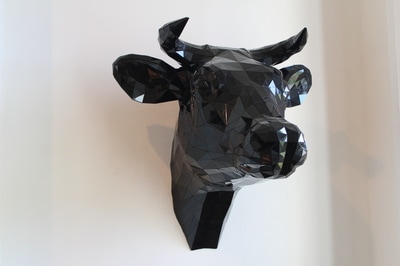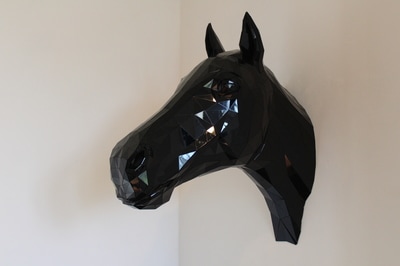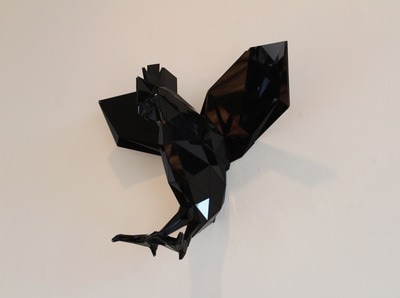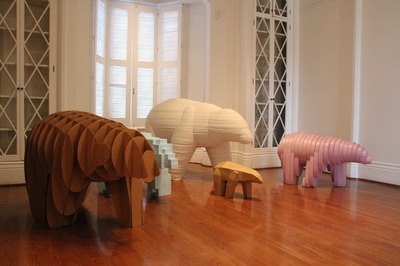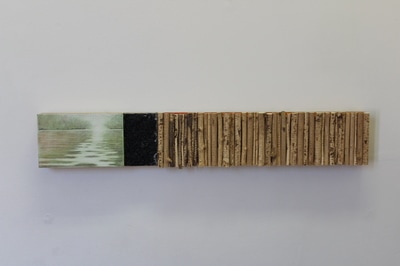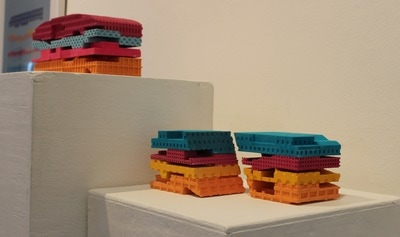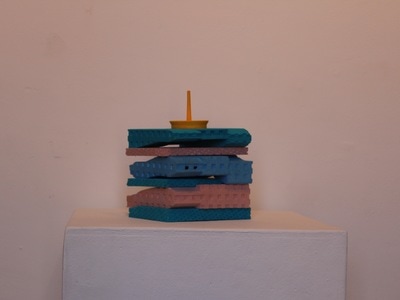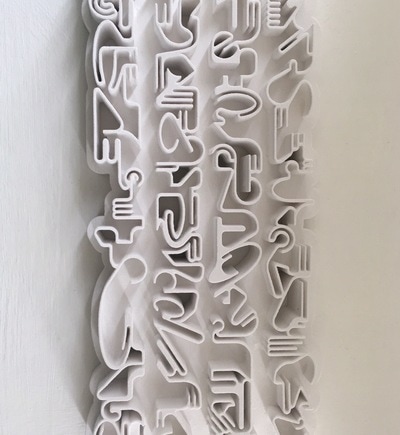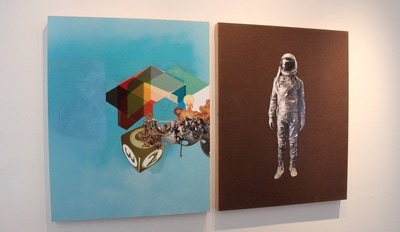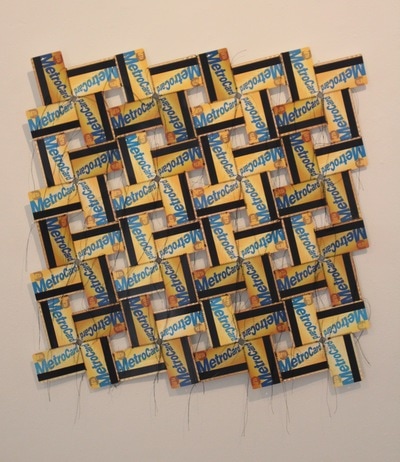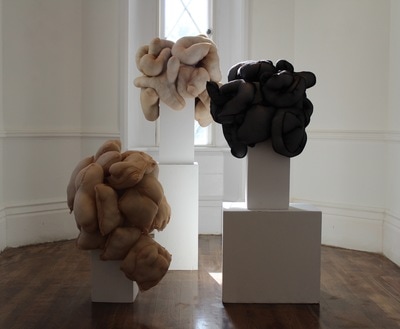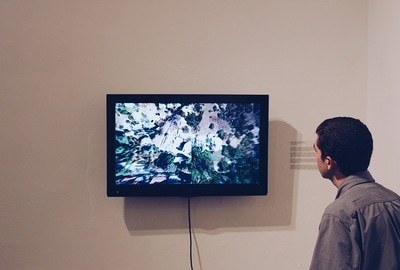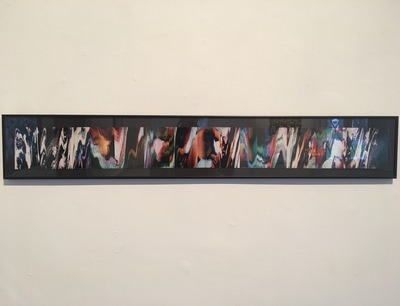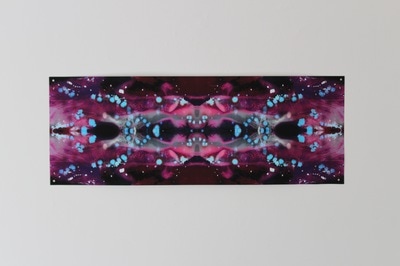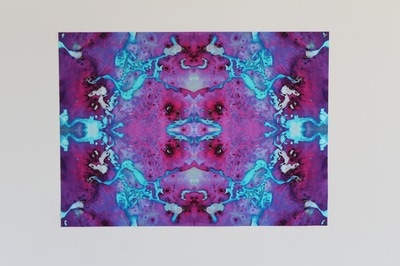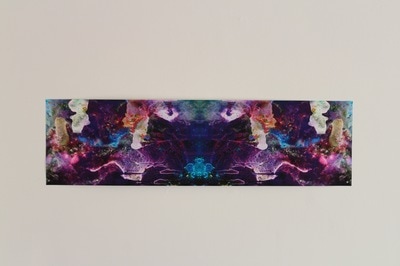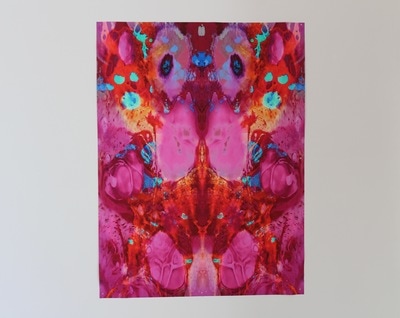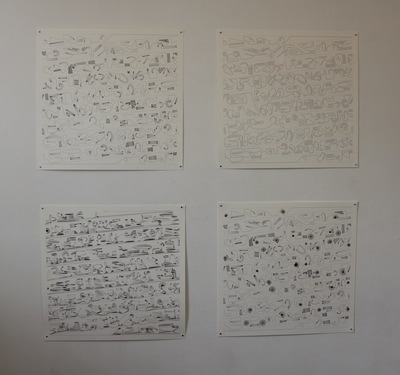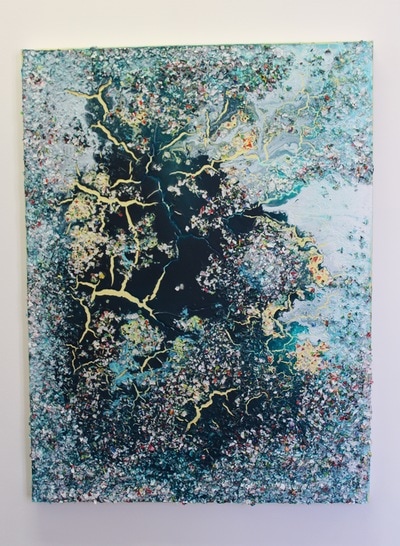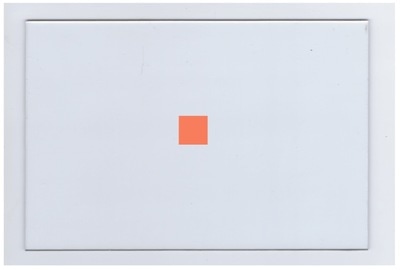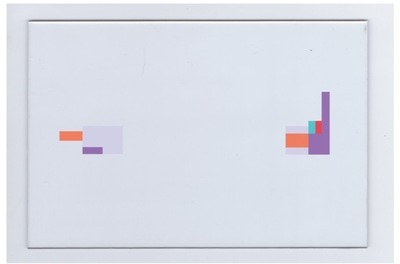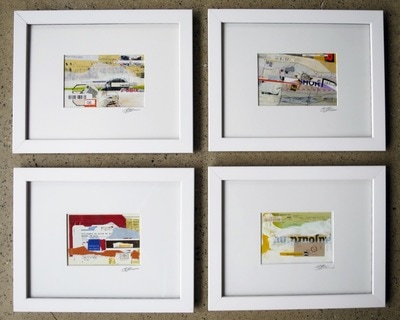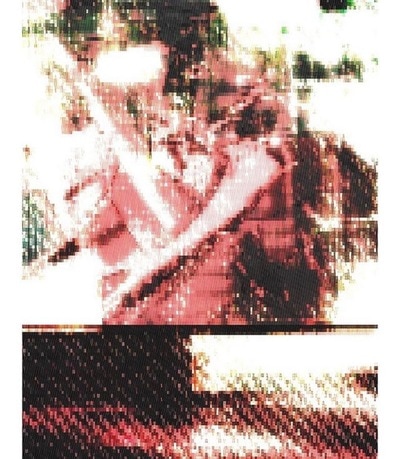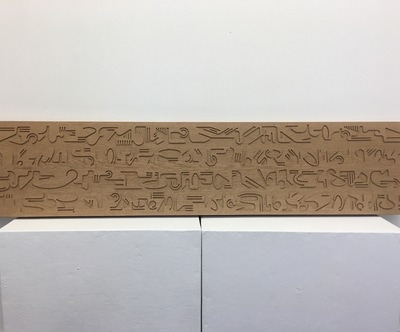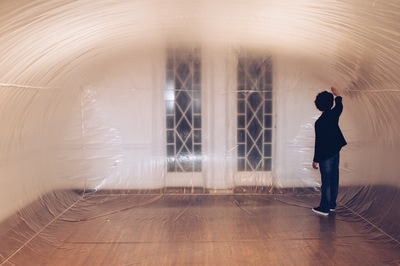Expanding Fields was an exhibition of art by architects, curated by Cat Wentworth, former director of Institute 193 in Lexington, KY. The exhibition sought to broaden the understanding of architecture beyond the conventional notion of building buildings. In recent decades, architecture has found new inspiration and outlets in an ever-widening variety of disciplines, and the boundary between architecture and other disciplines appears more blurred.
This exhibition was not intended to showcase representations of architecture—plan drawings, architectural models, or renderings—but instead presented works that stand on their own and together serve as a sampling of sensibilities that are unique to the language of architecture.
This exhibition was not intended to showcase representations of architecture—plan drawings, architectural models, or renderings—but instead presented works that stand on their own and together serve as a sampling of sensibilities that are unique to the language of architecture.
Participating Artists: Haviland Argo, Besler & Sons (Erin Besler and Ian Besler), Jennifer Bonner, Joseph Clark, Jr., Rebecca Cox, Joanna Grant, Sarah Heller, Informal Office (Jordan Hines and Erin Ruhl), Jimenez Lai, The Los Angeles Design Group, Mike McKay, William O'Brien, Jr., Rives Rash, Jerzy Rozenberg, Jason Scroggin, Martin Summers, Liz Swanson, Clark Thenhaus, Ainsley Wagoner - Andrew Allred - and Chris Wininger
Curatorial Statement
In recent decades, architecture has found new inspiration and outlet in an ever-widening variety of disciplines, and consequently the boundary between architecture and other fields is disappearing.
Expanding Fields seeks to question the value in such divisions as well as to broaden understanding of architecture beyond the conventional notion of building buildings. Though viewers will encounter many of the same themes embedded in the architecture with which we typically interact every day, they will not find typical representations of architecture plan drawings, architectural models, or renderings but will instead find works that stand on their own and together serve as a sampling of sensibilities that are unique to the language of architecture.
These architects have fabricated inflatable bubble rooms, inedible sandwiches, paper dolls, and polygonal animals. They ask synesthetic questions like, “What does sound look like?” and spell their answers in computer code. Collages of spliced images dissolve time and create new visual structures. Data extracted from Disney movies or internet searches is recontextualized and given new meaning. As viewers navigate the gallery spaces, they interact with these works not only with their eyes and ears but with their own voices, their bodies and their cell phones (contemporary human organs?).
Expanded ways of thinking, making, and interacting help architects realistically to confront our present social, economic, technological, aesthetic, and ecological reality. These new combinations may not be exactly architecture, or, at least, not exactly architecture as we have experienced it in the past. But rather than attempting to identify single and fundamental definitions for architecture, celebrating multiplicity and superimposition allows us freedom to examine the works not by classifying them but by illuminating their content.
In recent decades, architecture has found new inspiration and outlet in an ever-widening variety of disciplines, and consequently the boundary between architecture and other fields is disappearing.
Expanding Fields seeks to question the value in such divisions as well as to broaden understanding of architecture beyond the conventional notion of building buildings. Though viewers will encounter many of the same themes embedded in the architecture with which we typically interact every day, they will not find typical representations of architecture plan drawings, architectural models, or renderings but will instead find works that stand on their own and together serve as a sampling of sensibilities that are unique to the language of architecture.
These architects have fabricated inflatable bubble rooms, inedible sandwiches, paper dolls, and polygonal animals. They ask synesthetic questions like, “What does sound look like?” and spell their answers in computer code. Collages of spliced images dissolve time and create new visual structures. Data extracted from Disney movies or internet searches is recontextualized and given new meaning. As viewers navigate the gallery spaces, they interact with these works not only with their eyes and ears but with their own voices, their bodies and their cell phones (contemporary human organs?).
Expanded ways of thinking, making, and interacting help architects realistically to confront our present social, economic, technological, aesthetic, and ecological reality. These new combinations may not be exactly architecture, or, at least, not exactly architecture as we have experienced it in the past. But rather than attempting to identify single and fundamental definitions for architecture, celebrating multiplicity and superimposition allows us freedom to examine the works not by classifying them but by illuminating their content.
EVENT GALLERY
Featured Artwork
